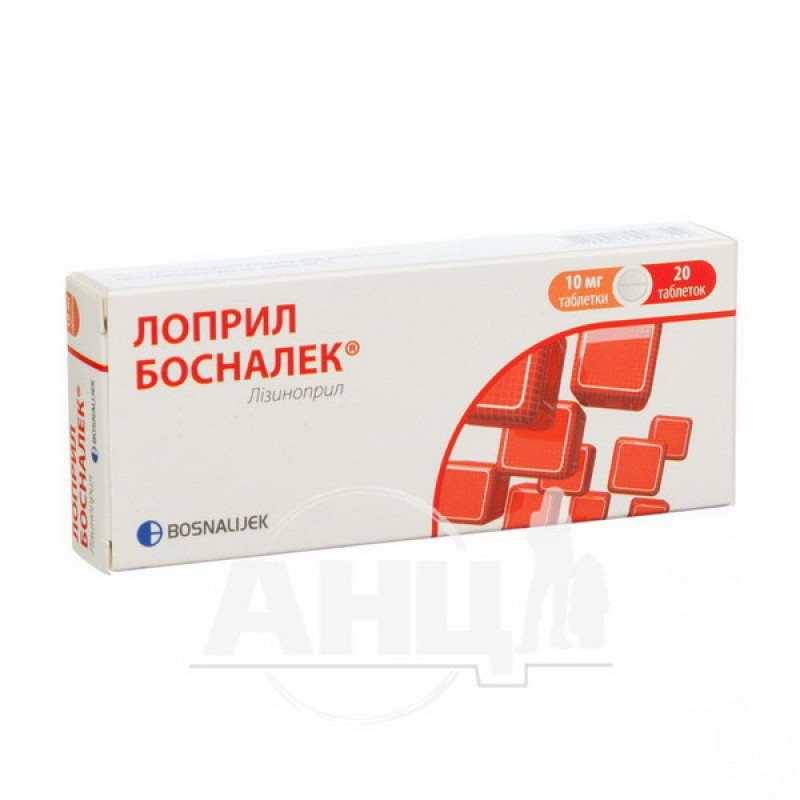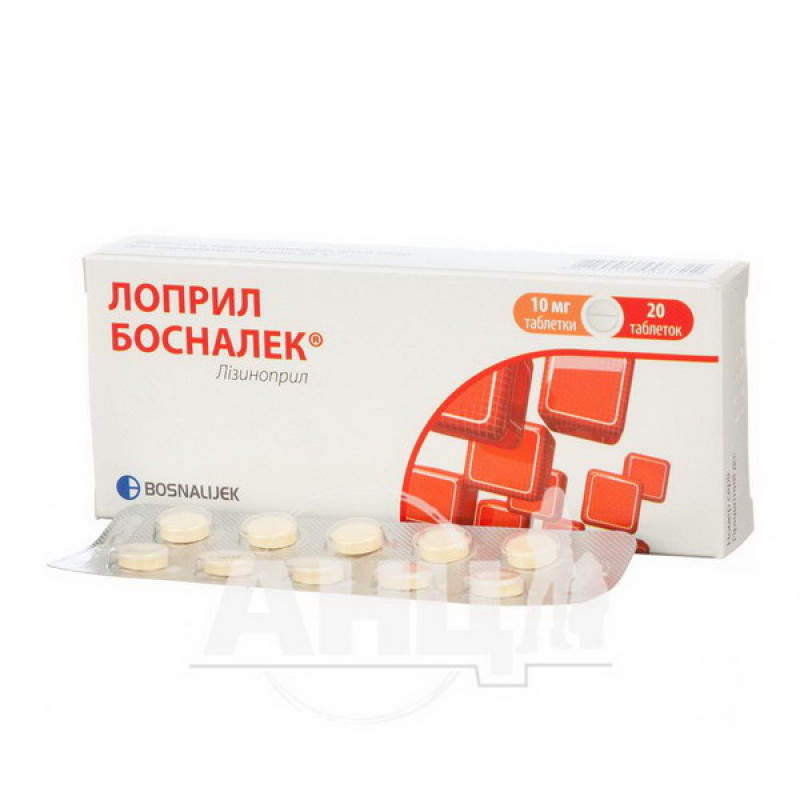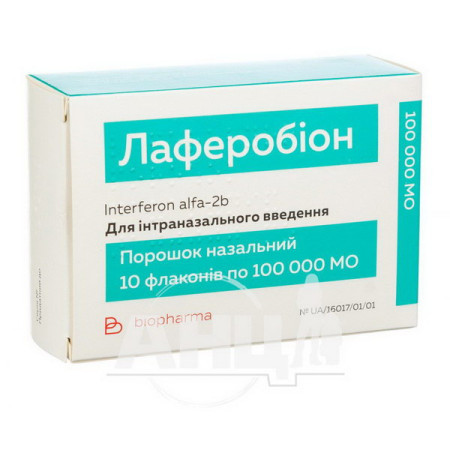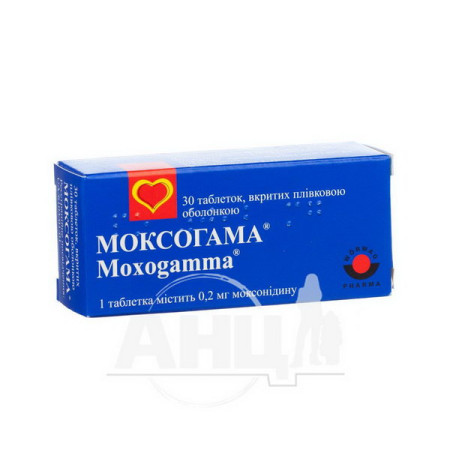Lopril Bosnalek tablets 10 mg blister No. 20

Lopril Bosnalek ® tablets are used for the following indications: hypertension, heart failure (symptomatic treatment), acute myocardial infarction (short-term treatment (6 weeks) of patients with stable hemodynamics within 24 hours after acute myocardial infarction), initial diabetic nephropathy in patients with type II diabetes mellitus with arterial hypertension.
Composition
The active substance is lisinopril (one tablet contains lisinopril (in the form of dihydrate) 10 mg).
Excipients: calcium hydrogen phosphate dihydrate, manit (E 421), corn starch, pregelatinized starch, magnesium stearate, talc, colloidal anhydrous silicon dioxide, yellow iron oxide (E 172).
Contraindication
Hypersensitivity to lisinopril or any component of the drug, hypersensitivity to other ACE inhibitors; angioedema associated with a history of ACE inhibitors; hereditary and idiopathic angioedema; pregnancy and planning pregnancy; simultaneous use with drugs containing aliskiren in patients with diabetes mellitus or renal failure.Method of application
Tablets should be taken orally once a day, preferably at the same time. Absorption is independent of food intake. The dose is prescribed by the doctor individually for each patient, depending on his condition.
Hypertension
Lisinopril can be used as monotherapy or in combination with other antihypertensive drugs.
The recommended initial dose is 10 mg per day. In patients with renovascular hypertension, salt or water imbalance, cardiac decompensation, and severe hypertension, an excessive decrease in blood pressure may occur after the first dose. Therefore, treatment of such patients should be started under supervision with a dose of 2.5-5 mg per day. In case of impaired renal function, it is recommended to start treatment with a reduced initial dose.
The usual effective maintenance dose is 20 mg once daily. If the therapeutic effect has not been achieved after 2-4 weeks of taking the prescribed dose, the dose may be increased. The maximum daily dose is 80 mg.
Patients taking diuretics
At the beginning of treatment with lisinopril, arterial hypotension may develop. This is most likely in patients taking diuretics. Therefore, it is advisable to stop taking diuretics 2-3 days before starting treatment with lisinopril. If this is not possible, therapy should be started with 5 mg of lisinopril per day, and the subsequent regimen should be established depending on blood pressure indicators. It is necessary to monitor kidney function and the level of potassium in the blood plasma. If necessary, diuretics can be resumed.
Heart failure
It is recommended to prescribe lisinopril as an additional therapy to diuretics, digitalis preparations or ß-blockers, the initial dose is 2.5 mg 1 time per day, under control to determine the effect of the drug on blood pressure. In the future, the dose should be increased by no more than 10 mg at intervals of at least two weeks to a maximum dose of 35 mg per day.
Dose selection should be based on the clinical response of the individual patient. In patients at high risk of symptomatic hypotension (eg, excessive salt intake, hypovolemia, intensive diuretic therapy), it is advisable to correct these conditions before initiating treatment with lisinopril. Renal function and serum potassium should be monitored.
Acute myocardial infarction
Patients should be given standard therapy (antithrombotic agents, acetylsalicylic acid, β-blockers). Intravenous or transdermal nitroglycerin may be used in conjunction with lisinopril.
Initial dose (first 3 days after myocardial infarction). Treatment with lisinopril can be started within 24 hours of the onset of symptoms of acute myocardial infarction, provided that the systolic blood pressure is not lower than 100 mm Hg. The initial dose is 5 mg, followed by 5 mg after 24 hours, after 48 hours and subsequently 10 mg once a day. Patients with a systolic blood pressure of 120 mm Hg or lower in the first 3 days after infarction are prescribed 2.5 mg per day.
The maintenance dose is 10 mg once daily. If systolic blood pressure during treatment is 100 mm Hg or less, the maintenance dose can be temporarily reduced to 5 mg or to 2.5 mg if necessary. If hypotension persists (systolic blood pressure below 90 mm Hg for more than one hour), the drug should be discontinued.
Treatment lasts 6 weeks, then it is necessary to re-evaluate the patient's condition. In case of heart failure, treatment should be continued.
Initial nephropathy in patients with diabetes mellitus
In patients with type 2 diabetes mellitus with hypertension and incipient nephropathy, the dose of lisinopril is 10 mg once daily. If necessary, the dose can be increased to 20 mg daily to achieve a diastolic blood pressure below 90 mm Hg when measured in the sitting position.
Application features
Pregnant women
Because no information is available regarding the use of lisinopril during breast-feeding, lisinopril is not recommended and alternative treatments with better established safety profiles during breast-feeding are preferable, especially while nursing a newborn or preterm infant.
Children
There is limited experience with the safety and efficacy of the drug in children. The drug should not be used to treat children.
Drivers
When driving a car or operating other machinery, the possibility of dizziness and fatigue should be taken into account.
Overdose
Data on overdose in humans are limited. Symptoms associated with overdose of ACE inhibitors may include hypotension, vascular collapse, electrolyte imbalance, renal failure, hyperventilation, tachycardia, palpitations, bradycardia, dizziness, restlessness, cough.
Treatment consists of intravenous infusion of saline. In case of hypotension, the patient should be placed in a horizontal position on a low pillow. If necessary, angiotensin II infusion and/or intravenous catecholamines should be used. If the drug has been taken recently, measures should be taken to remove it from the body (gastric lavage, vomiting, administration of absorbents or sodium sulfate). Lisinopril can be removed from the blood by hemodialysis. In the presence of bradycardia resistant to treatment, the use of a pacemaker may be indicated. Vital signs, electrolytes and creatinine levels should be monitored.
Side effects
From the blood and lymphatic system: decreased hematocrit and hemoglobin levels, suppression of bone marrow hematopoiesis, anemia, thrombocytopenia, leukopenia, neutropenia, agranulocytosis, hemolytic anemia, lymphadenopathy, autoimmune diseases.
Metabolic: hypoglycemia.
Nervous system: dizziness, headache, mood changes, paresthesia, vertigo, taste and smell disorders, sleep disorders, hallucinations, confusion, depression, fainting.
Cardiovascular: orthostatic hypotension, myocardial infarction, stroke, probably due to significant hypotension in patients at high risk of these diseases, palpitations, tachycardia, Raynaud's syndrome.
Respiratory system: cough, rhinitis, bronchospasm, sinusitis, allergic alveolitis, eosinophilic pneumonia.
Gastrointestinal: diarrhea, nausea, vomiting, stomach pain, dyspepsia, dry mouth, pancreatitis, intestinal angioedema, hepatocellular or cholestatic hepatitis, jaundice, liver failure.
Skin and subcutaneous tissue disorders: rash, pruritus, urticaria, alopecia, psoriasis, hypersensitivity reactions/angioedema (swelling of the face, extremities, lips, tongue, pharynx, larynx), increased sweating, pemphigus, toxic epidermal necrolysis, Stevens-Johnson syndrome, erythema multiforme, cutaneous pseudolymphoma. A symptom complex has been reported which may include the following manifestations: fever, vasculitis, myalgia, arthralgia/arthritis, positive test for antinuclear antibodies, increased ESR, eosinophilia, leukocytosis, rash, photosensitivity or other skin manifestations.
From the urinary system: renal dysfunction, uremia, acute renal failure, oliguria, anuria.
On the part of the endocrine system: syndrome of inappropriate secretion of antidiuretic hormone.
From the reproductive system: impotence, gynecomastia.
Storage conditions
Store at a temperature not exceeding 30 °C, out of the reach of children.
Shelf life - 3 years.
There are no reviews for this product.
There are no reviews for this product, be the first to leave your review.
No questions about this product, be the first and ask your question.






